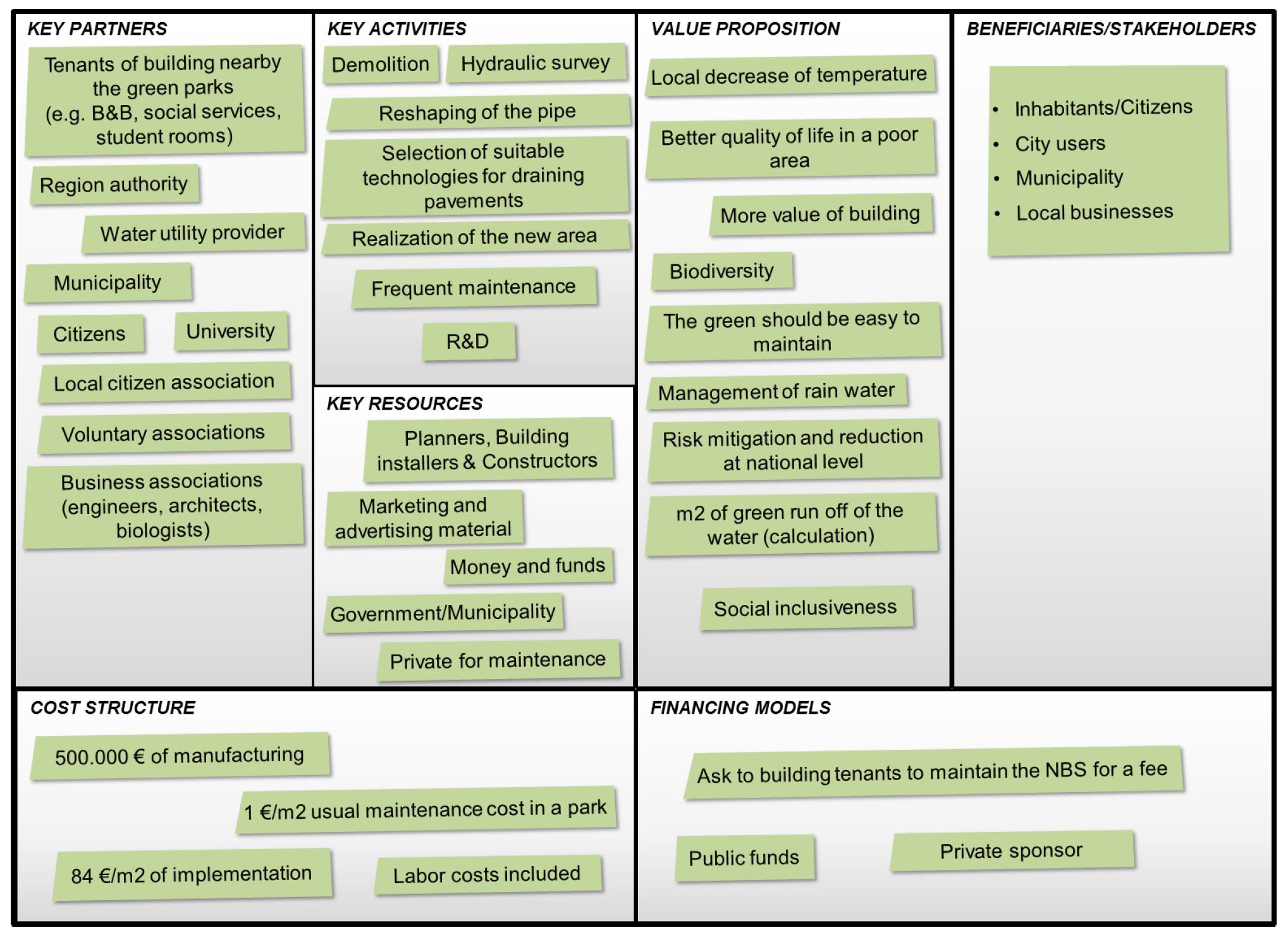The NBS Business Model Canvas Methodology
There are different definitions of “Business Models”, in terms of both structure and contents, but in general, a “business model” represents a plan implemented by a Company to create a value proposition for the targeted customers, to make it and to gain a part of the economic value generated. A business model can be articulated in conceptual blocks that allow making explicit the most relevant phenomena for the management of a company. This formalism – also known as “Business Model Canvas” – was proposed for the first time by (Osterwalder, 2004). It was further developed in cooperation with Yves Pigneur and Alan Smith and a community of 470 experts in 45 countries and published in “Business Model Generation” (Osterwalder & Pigneur, 2011). The Business Model Canvas is a complete and systemic method that allows reducing the complexity of the business modelling activity, representing in an effective manner all the parts and internal/external dynamics that are within a Business Model, using a visual language (visual thinking logic). Within the UNaLab project it has been further developed and used to plan and assess NBS projects.
The resulting NBS business model is provided for each type of investigated NBS (selected from each frontrunner city), reporting the following information: main features, value proposition, conditions for implementation, main stakeholders involved, costs, financing options and limits. Thereby, the NBS Business Model Canvas is a tool that was already used and tested in the past in other NBS projects to support the initial planning stages of NBS implementation, such as in the European “Connecting Nature” project (McQuaid, 2019). In particular, it helps to communicate, plan, identify new partners, explore new sources of finance, and broaden the value proposition of NBS.
Below you can find examples on how this canvas has been applied in the UNaLab city demonstration projects and download a blank template for individual use.
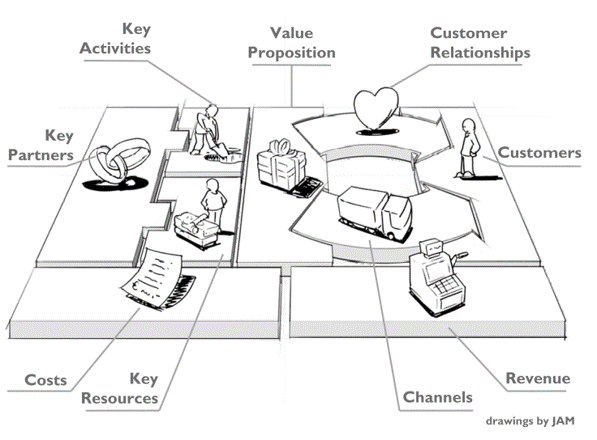
Permeable pavements
Permeable surfaces or pavements are urban surfaces composed of open pore pavers, concrete, or asphalt with an underlying stone reservoir. There is a variety of different permeable surfaces that is available for a range of applications. The most common uses of permeable pavements are parking lots, low-traffic roads, sidewalks, and driveways, commonly installed on car parks, residential streets or sidewalks.
The business model of permeable pavements implemented in UNaLab front-runner city Genova is presented as a case study following this link.
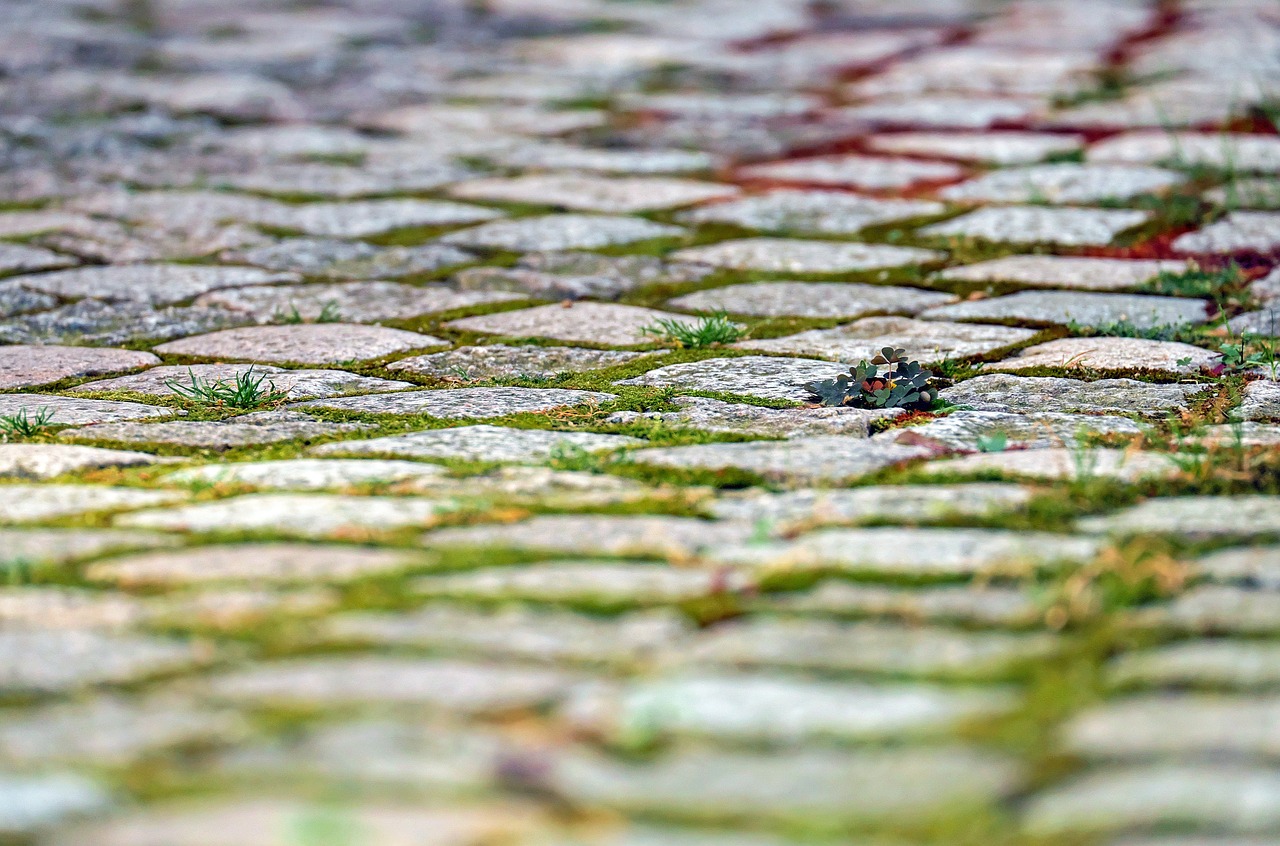
Sneak peek of the case study: Permeable pavements in Genova
In Genova, one of the three UNaLab front-runner cities, the implementation of permeable pavements was planned to be located, through a requalification plan, in the area of the Gavoglio Barracks. The NBS experience in Genova allowed to create and develop the business model of permeable pavements implemented in UNaLab, as summarised in the canvas below and fully described in the downloadable content above.
Green urban areas
Green urban areas are spaces with vegetation within or partly embraced by urban fabric. This class is assigned for urban greenery, which usually has recreational or ornamental character and is usually accessible for the public. Green urban areas aim at imparting several positive effects on urban ecosystems. Some main benefits are the provision of habitats for urban wildlife, regulation of air temperature, pollution control, shading, CO2 absorption, and human recreation.
The business models of green urban areas implemented in UNaLab front-runner cities Eindhoven and Tampere are presented as case studies following this link.
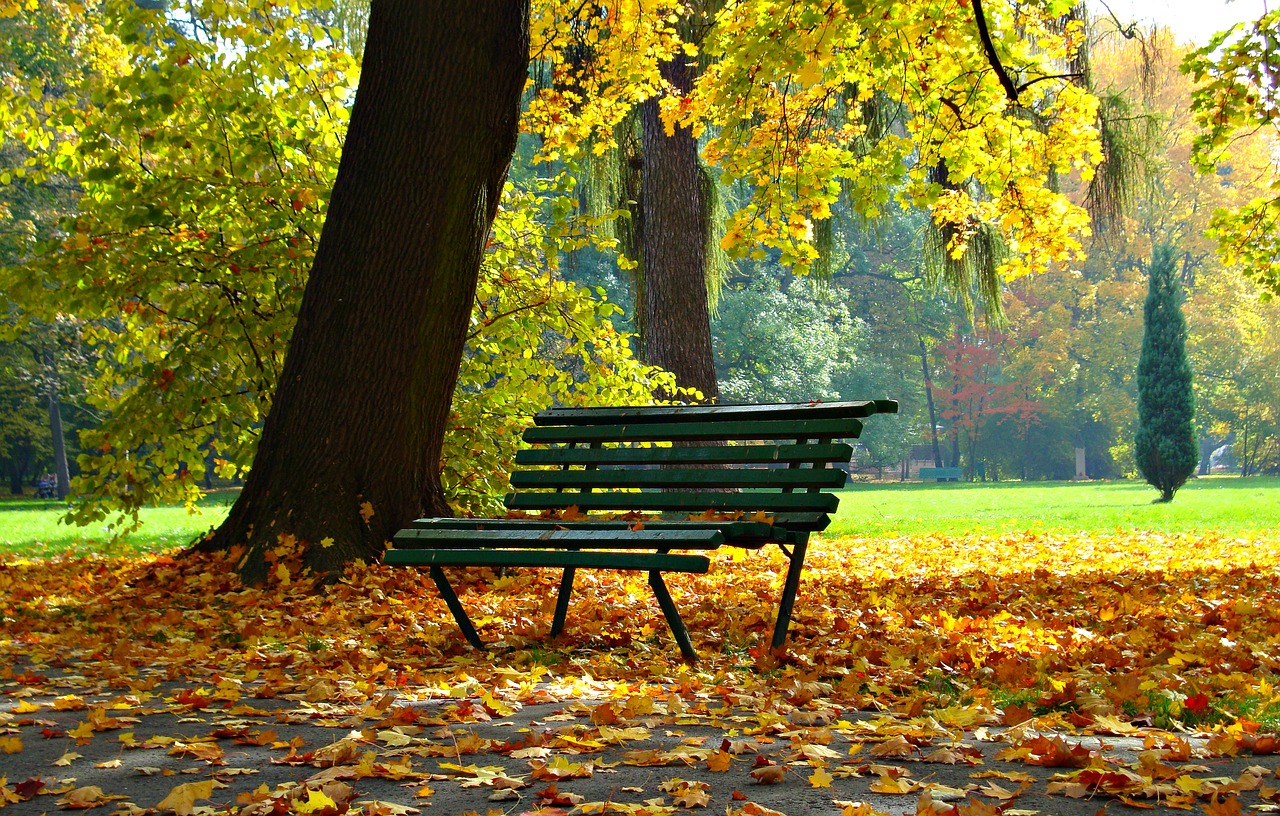
Sneak peek of the case studies: Urban green areas in Eindhoven and Tampere
The urban green areas in Eindhoven and Tampere are located in Clausplein (Eindhoven) and in Vuores (Tampere).
Permeable pavements in Eindhoven were replaced with green spaces with the aim to increase biodiversity, reduce heat stress and improve air quality. The NBS locations are situated in or near the city centre. Clausplein is a square with little green situated on top of a parking garage, representing a significant example for the implementation of green urban areas in the city of Eindhoven.
Urban gardens with small-scale NBS in Tampere refers to co-design and co-implement small-scale NBS and complementary infrastructure in the Vuores area. These solutions include rain gardens, rainwater collection systems for non-potable irrigation, urban garden areas and other similar solutions.
The NBS experiences in Eindhoven and Tampere allowed to create and develop the business models of green urban areas implemented in UNaLab, as summarised in the canvas below and fully described in the downloadable content above.
River restoration
River restoration refers to a large variety of ecological, physical, spatial and management measures and practices, aimed at restoring the natural state and functioning of the river system to support biodiversity, recreation, flood management and landscape development. The restoration's measures are diverse and they can modify different parts of the river e.g., the riverbed, the riverbank or floodplains, including both small-scale and large scale interventions.
The business models of river restoration implemented in UNaLab front-runner city Eindhoven is presented as a case study following this link.

Sneak peek of the case study: River restoration in Eindhoven
River restoration was planned to be implemented in Eindhoven through the re-establishment of watercourses (daylighting) in “Victoriapark” (one of the several NBS locations in Eindhoven). One of the goals of the project is to uncover sections of covered watercourses with the aim to re-establish water courses and manage water flows.
The NBS experience in Eindhoven allowed to create and develop the business model of river restoration implemented in UNaLab, as summarised in the canvas below and fully described downloading the content above.
Green roofs and vertical greening
Green roofs are vegetative layers implemented on rooftops - especially in urban areas - with the aim to provide green space for different purposes and mitigate urban heat islands. Depending on the type of green roof installed, the plants may be modular or have drainage layers. However, all green roofs include a few important features, such as waterproofing and root repellent, to keep the structure safe and undamaged.
Green wall or vertical greening is used as the general term for any vegetation cover on vertical surfaces, no matter where the roots are located. Similar to green roofs vertical greening can be differentiated according to the level of technical support that is needed to sustain vegetation.
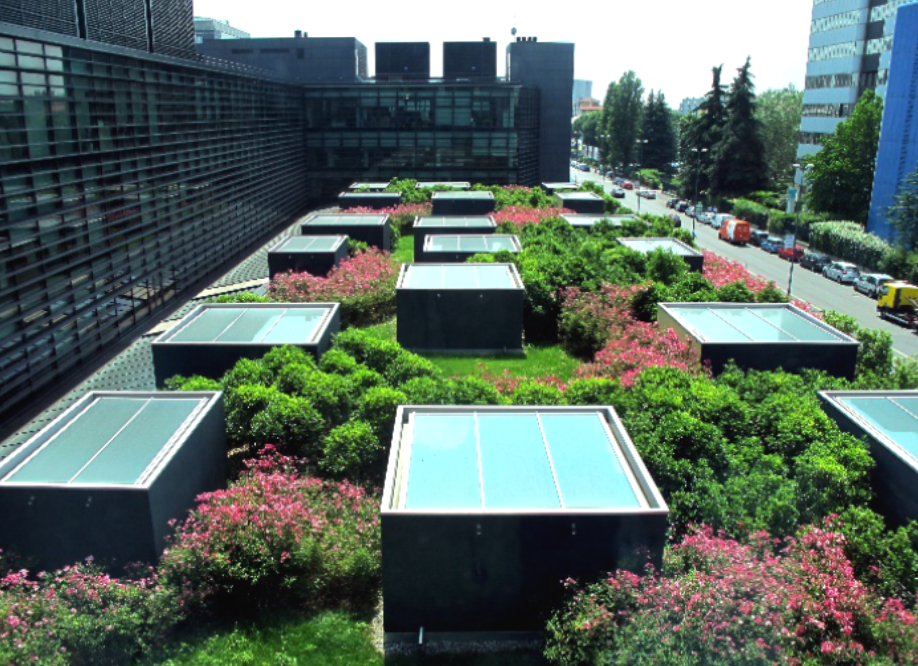
Sneek Peak of the case study: Green roofs and vertical greening
Green roofs and green building façades were planned to be implemented in Eindhoven and in Tampere to contribute to the mitigation of negative effects in urban areas, in particular caused by urban sealing, buildings and heat emissions.
Green roofs in Tampere were located in Hiedanranta, a brownfield area transformed into a housing district. In particular, the green roof was implemented and tested above the “Old water treatment plant” that is one of the city owned and protected buildings.
The NBS experience in Eindhoven and Tampere allowed to create and develop the business models of green roofs and vertical greeening implemented in UNaLab front-runner cities, presented as a case study following this link.
Water sensitive urban design measures
Water Sensitive Urban Design (WSUD) is an emerging urban development paradigm aimed to minimise hydrological impacts of urban development on the environment.
Reducing hardened, impervious surfaces and accurately design drainage of urban spaces, in combination with the use of pervious roads, penetrable concrete and water passing pavements helps to enhance the infiltration of storm water in underlying surface, reducing runoff into sewerage systems and urban spaces, attenuating flood peaks, reducing the urban pollution load in run-off), as well as reduce the risk of damages due to drainage system failure by flooding.
Common WSUD practices are: bioswales, infiltration basins, detention ponds, retention ponds, rain gardens, bio filters.
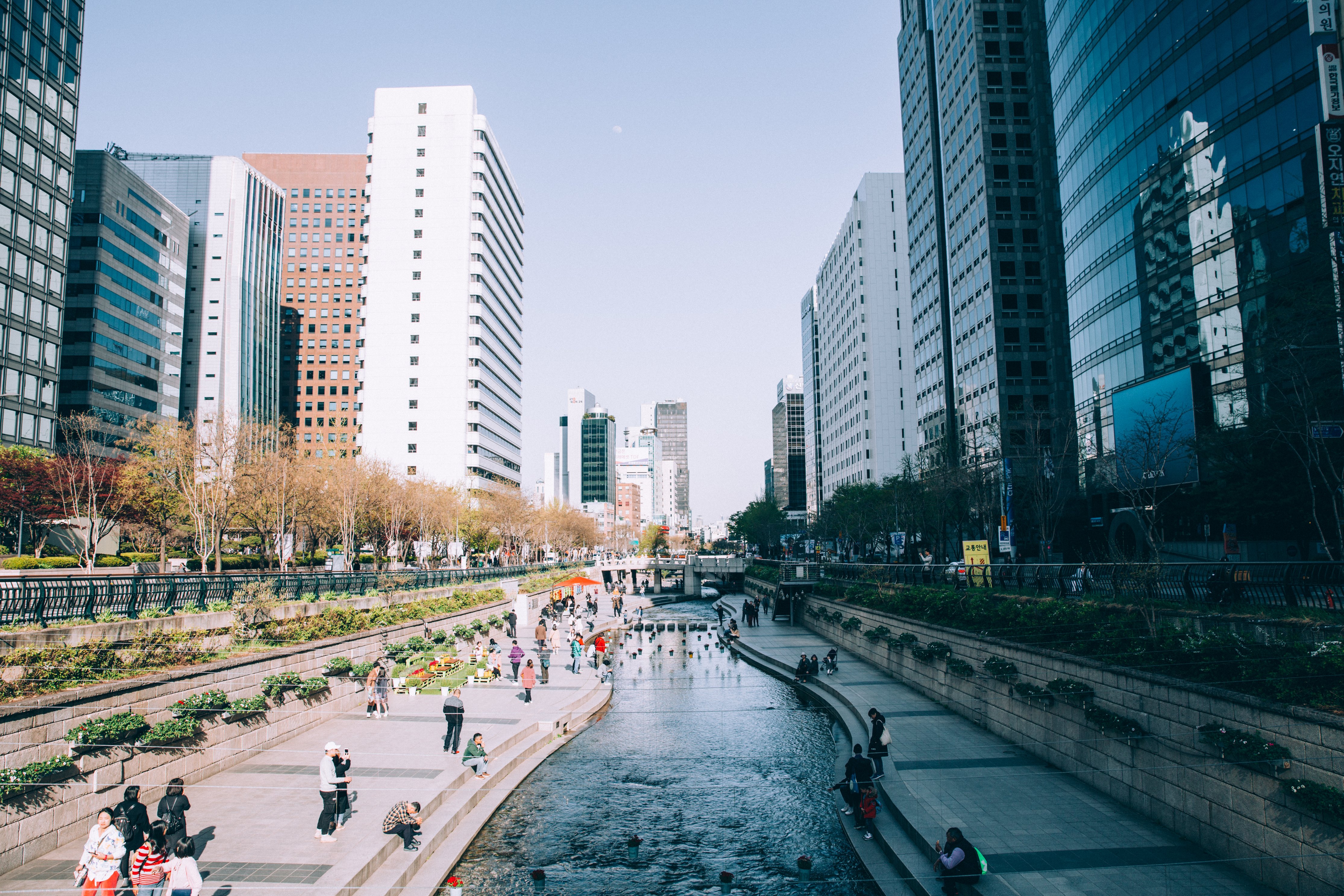
Sneak peek of the case study: Water sensitive urban design measures
Water sensitive urban design measures were planned to be implemented in Genova and in Tampere to to prevent solids and nutrient load to waterways, handle the first flush, prevent urban floods, maintain moisture conditions, retain and increase biodiversity and regulate flow rates to the pre-construction level by drainage area.
The objective of the implementation of infiltration basins in the city of Genova is the management of runoff water coming from the slopes and pathways relative to the Cinque Santi River and their infiltration into the soil.
The storm water management system to be installed in Vuores, Tampere, will be a hybrid system characterised by some blocks that gather and manage storm water sewers.
The NBS experience in Genova and Tampere allowed to create and develop the business models of water sensitive urban design measures implemented in UNaLab front-runner cities, presented as a case study following this link.
Learning Materials
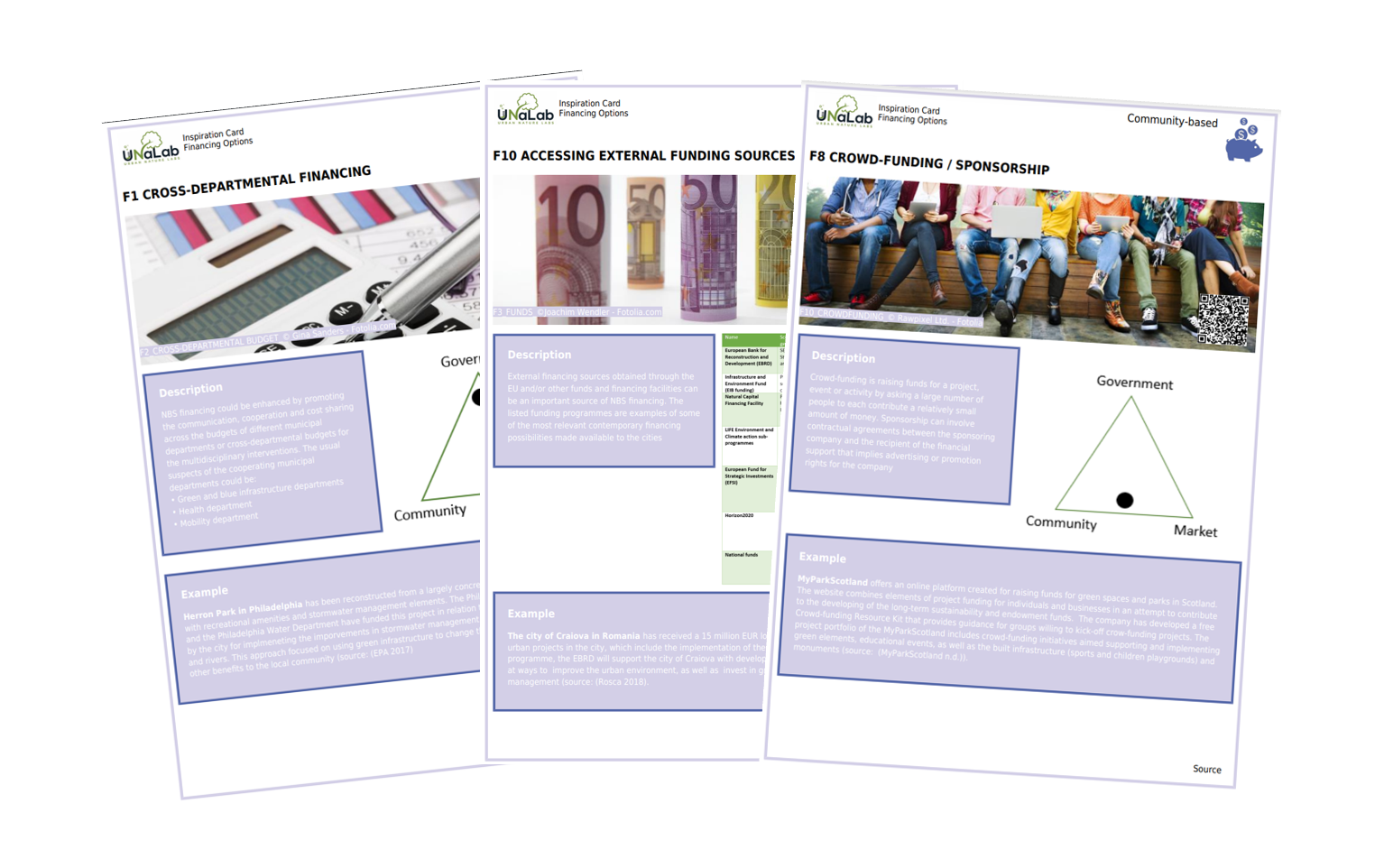
Financing Options Inspiration Cards
Different financing options in the form of individual inspiration cards for use in workshops or brainstorming sessions (available in English and Spanish).

